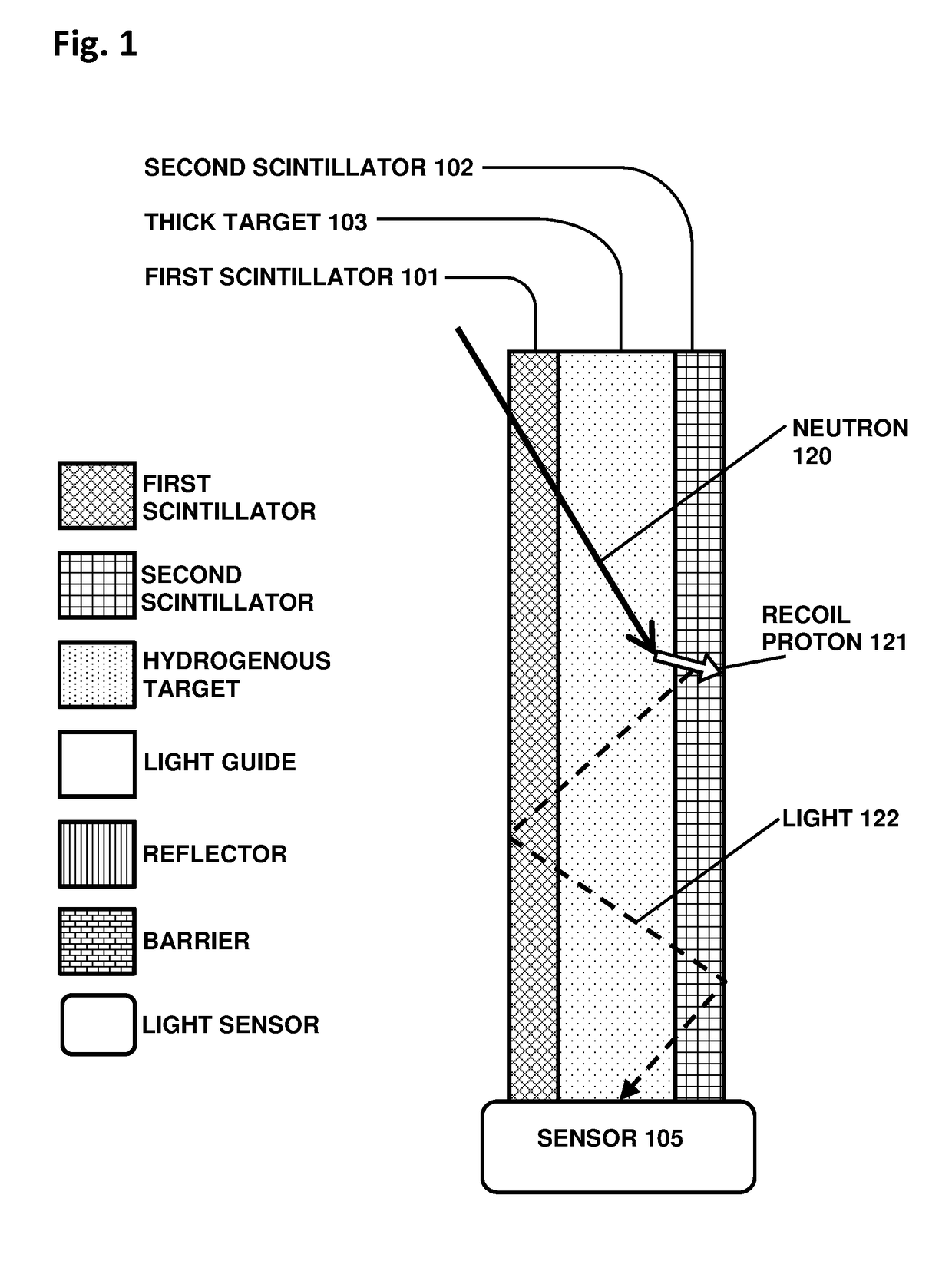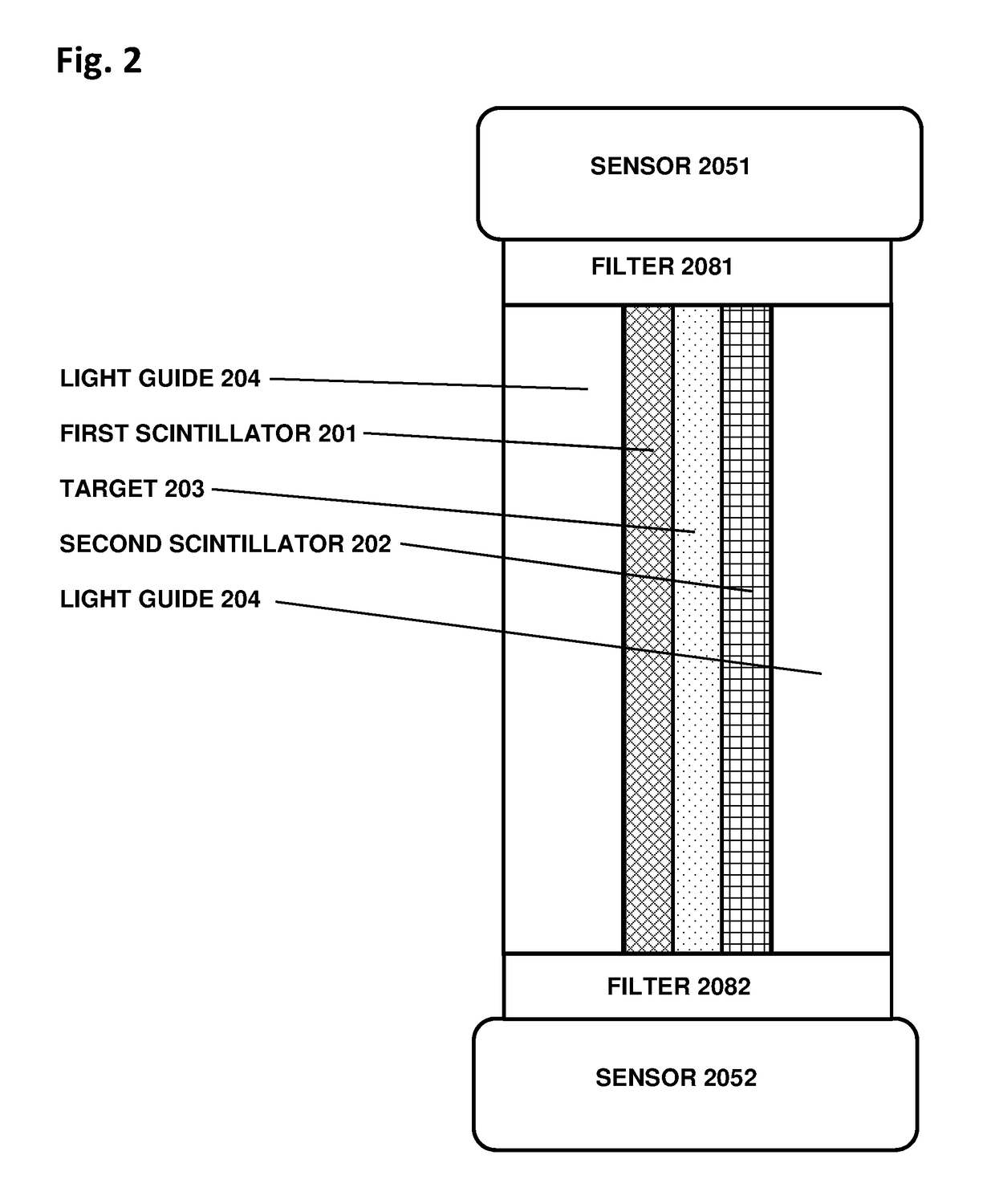Directional Neutron Detector
a neutron detector and directional technology, applied in the field of neutron detectors, can solve the problems of not having suitable means to conduct, three detected neutrons would probably not be enough to trigger, etc., and achieve the effect of high insensitivity and easy assembly
- Summary
- Abstract
- Description
- Claims
- Application Information
AI Technical Summary
Benefits of technology
Problems solved by technology
Method used
Image
Examples
Embodiment Construction
[0049]The inventive target is usually a polymer such as CH2, or it could alternatively be a hydrated mineral or ceramic layer (for high temperature applications), or other compounds that include hydrogen. The target could be any thickness, with different advantages for each. A thin target, with a thickness related to the recoil proton stopping range, is efficient in that many of the recoil protons are able to escape from the thin target layer and be detected. Such a thin target is easily applied in sheet or film form, or deposited as a liquid layer that is then polymerized or dried to achieve the desired thickness. Usually in the thin-target configuration a pair of transparent non-scintillating non-hydrogenous light guides are optically coupled to the two scintillators respectively, to enable efficient transport of the light to the sensor.
[0050]In the thick-target version, the target is a transparent hydrogenous plate, usually a polymer, which is thick enough to serve as a light gui...
PUM
 Login to View More
Login to View More Abstract
Description
Claims
Application Information
 Login to View More
Login to View More - R&D
- Intellectual Property
- Life Sciences
- Materials
- Tech Scout
- Unparalleled Data Quality
- Higher Quality Content
- 60% Fewer Hallucinations
Browse by: Latest US Patents, China's latest patents, Technical Efficacy Thesaurus, Application Domain, Technology Topic, Popular Technical Reports.
© 2025 PatSnap. All rights reserved.Legal|Privacy policy|Modern Slavery Act Transparency Statement|Sitemap|About US| Contact US: help@patsnap.com



